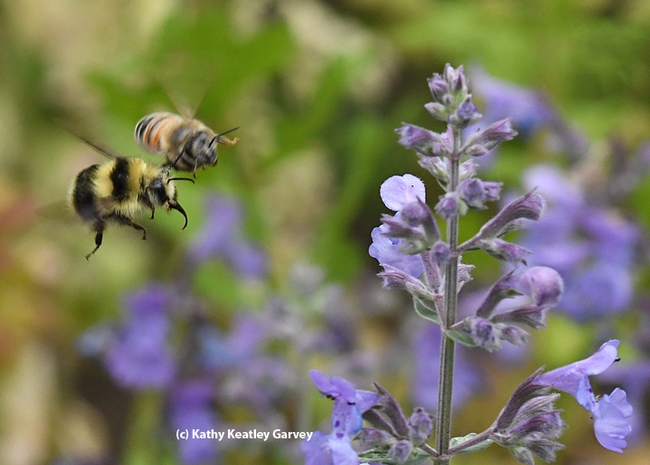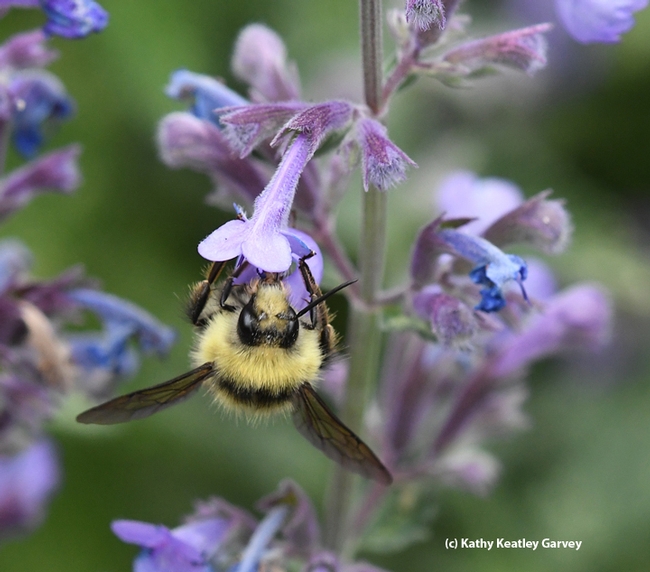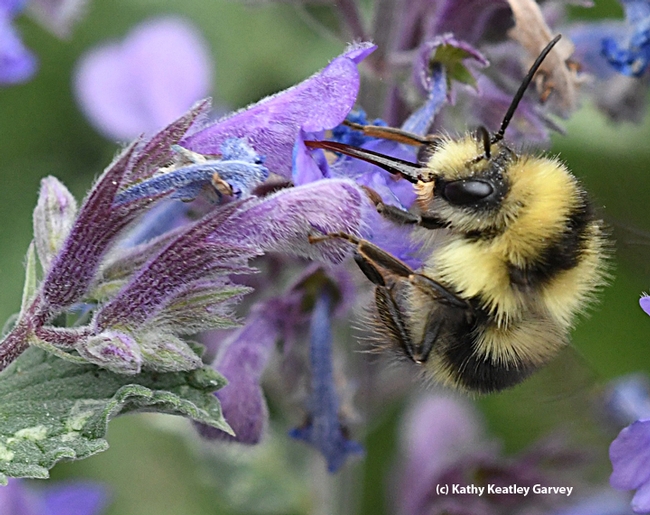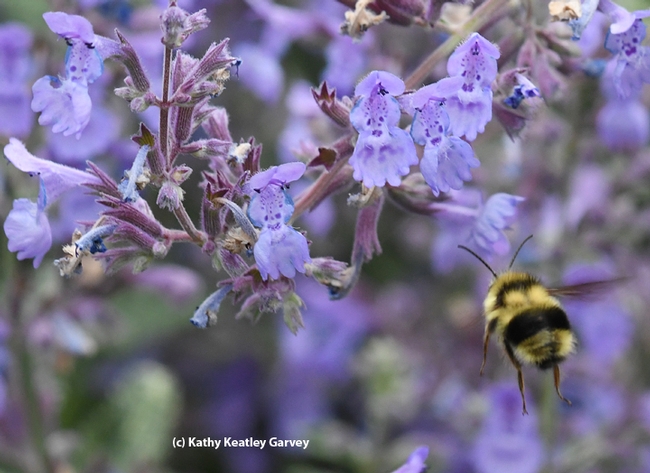Hey, honey bee, I'll race you to the flowers.
Okay, but you'll lose. I can go faster. Watch me!
The scene: a male bumble bee, Bombus melanopygus, and a worker honey bee, Apis mellifera, are buzzing along at breakneck speed toward the lavender in our pollinator garden in Vacaville, Calif.
They nearly collide but Mr. Bumble Bee pauses in mid-air and gives Ms. Honey Bee a free pass---and just in time for National Pollinator Week, when all of our pollinators need free passes! That starts out with two crucial steps: plant bee-friendly flowers and avoid using pesticides. Feed them food, not poison.
The end result here: plenty of nectar for everyone.
Bombus melanopygus, also known as the black-tailed honey bee, is among the bumble bees featured in the book, Bumble Bees of North America: An Identification Guide (Princeton University), the award-winning work of Paul H. Williams, Robbin W. Thorp, Leif L. Richardson and Sheila R. Colla.
Thorp, a distinguished emeritus professor of entomology at UC Davis, is also the co-author (along with Gordon Frankie, Rollin Coville, and Barbara Ertter) of California Bees and Blooms: A Guide for Gardeners and Naturalists. They offer great information on bee identification, but also crucial advice on how to attract and retain bees in your garden.
Happy Pollinator Week!
Attached Images:

A honey bee and a bumble bee, Bombus melanopygus, head for the same patch of lavender. This image was taken in Vacaville, Calif. (Photo by Kathy Keatley Garvey)

The bumble bee, Bombus melanopygus, sips nectar from a lavender blossom. (Photo by Kathy Keatley Garvey)

In this photo, you can see the bumble bee's tongue or proboscis, as it sips nectar from lavender. This is a male Bombus melanopygus. (Photo by Kathy Keatley Garvey)

It's off to another blossom. A male bumble bee, Bombus melanopygus, heads for more nectar. (Photo by Kathy Keatley Garvey)